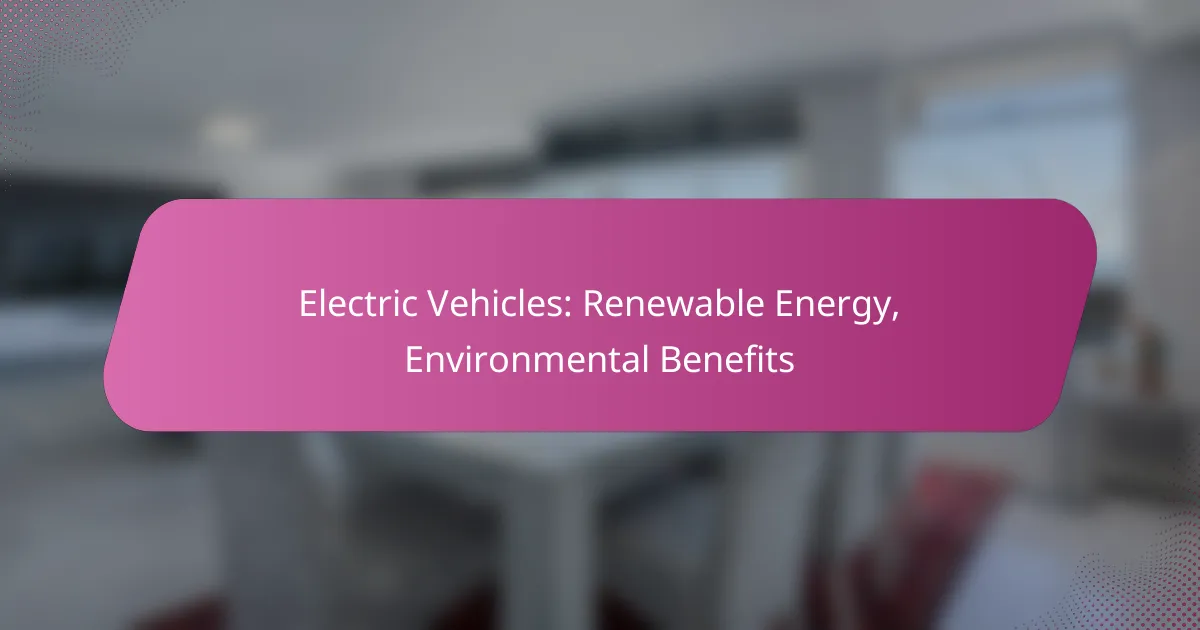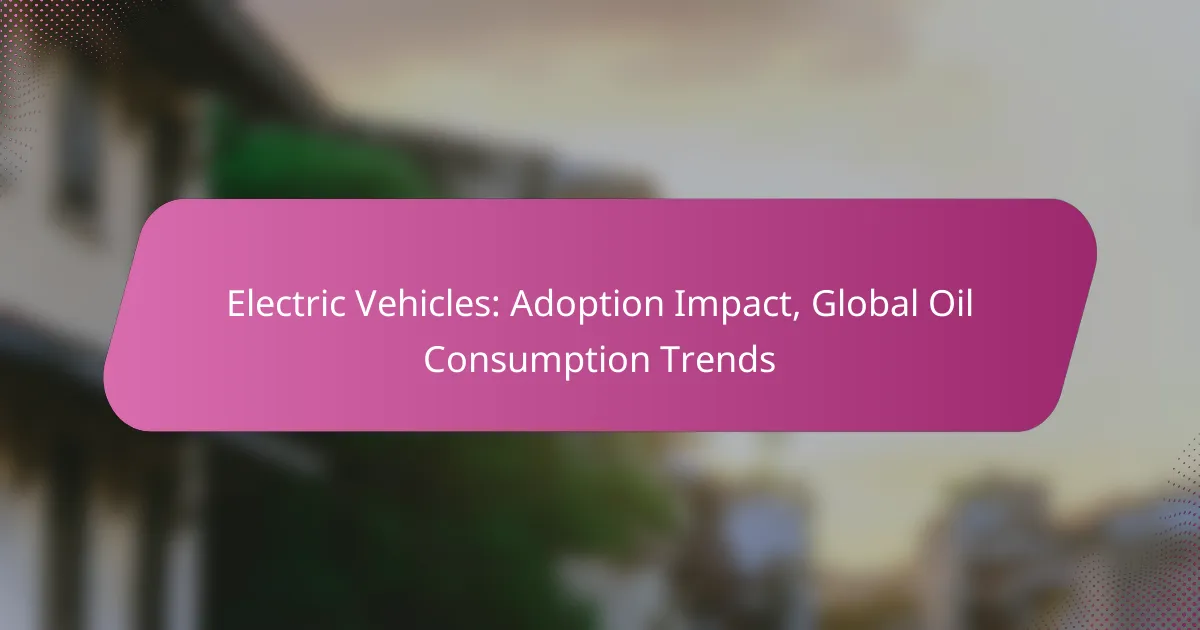Electric vehicles (EVs) represent a significant advancement in sustainable transportation by harnessing renewable energy sources such as solar, wind, and hydropower for charging. This shift not only minimizes greenhouse gas emissions but also enhances the overall environmental quality by reducing pollution levels. With their superior fuel efficiency and lower maintenance costs, EVs are an appealing option for consumers committed to a cleaner, more sustainable future.
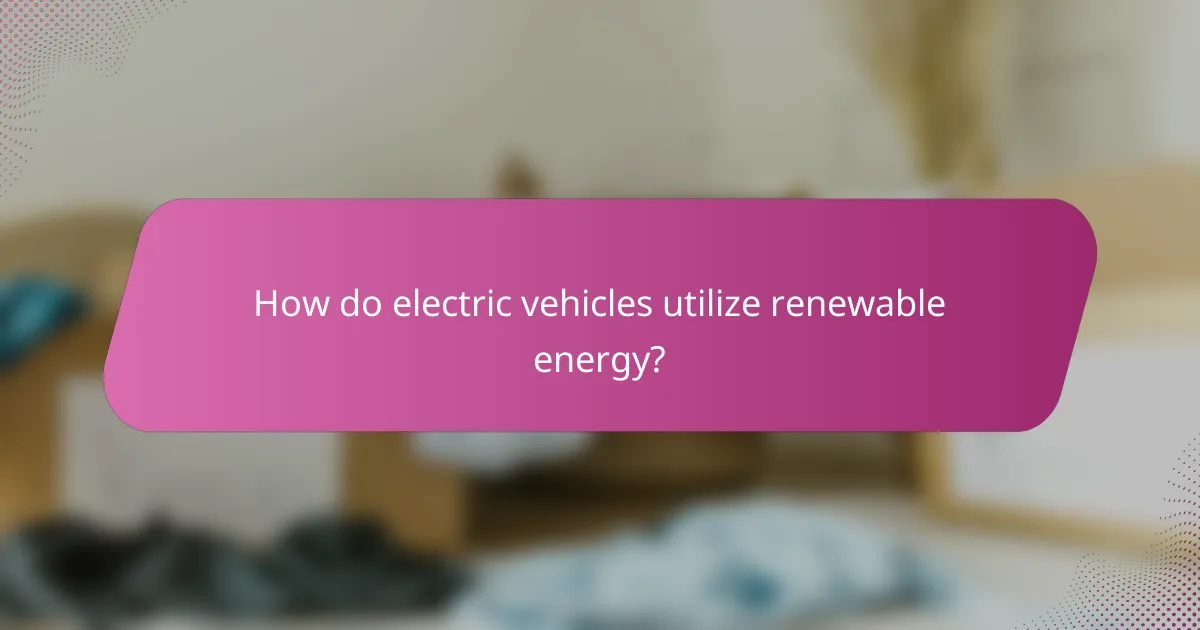
How do electric vehicles utilize renewable energy?
Electric vehicles (EVs) utilize renewable energy primarily by charging their batteries with electricity generated from sustainable sources like solar, wind, and hydropower. This integration not only reduces greenhouse gas emissions but also promotes the use of clean energy in transportation.
Solar energy integration
Solar energy integration involves using photovoltaic panels to convert sunlight into electricity, which can then be used to charge EVs. Many EV owners install solar panels at home to generate their own electricity, significantly lowering charging costs and enhancing energy independence.
In regions with abundant sunlight, solar charging stations are becoming common, allowing EV drivers to recharge while parked. This method can provide a sustainable solution, especially during peak sunlight hours when energy demand is high.
Wind energy charging
Wind energy charging harnesses the power of wind turbines to produce electricity for EV charging. Wind farms, often located in rural areas, can generate large amounts of energy, which can be fed into the grid or directly to charging stations.
Charging stations powered by wind energy can be particularly effective in areas with consistent wind patterns. This method not only supports the grid but also helps to stabilize energy prices by diversifying the energy supply.
Hydropower for EV charging stations
Hydropower utilizes flowing water to generate electricity, making it a reliable renewable energy source for EV charging stations. Dams and river systems can provide a consistent power supply, especially in regions where water resources are abundant.
In areas with established hydropower infrastructure, EV charging stations can be strategically placed to take advantage of this clean energy. This approach can significantly reduce the carbon footprint of electric vehicle usage, aligning with environmental goals and regulations.

What are the environmental benefits of electric vehicles?
Electric vehicles (EVs) offer significant environmental benefits primarily through reduced emissions and lower pollution levels. By utilizing renewable energy sources and efficient technologies, EVs contribute to a cleaner and more sustainable environment.
Reduction in greenhouse gas emissions
Electric vehicles significantly reduce greenhouse gas emissions compared to traditional gasoline or diesel vehicles. When charged with renewable energy, such as solar or wind, the overall carbon footprint can be minimized, leading to a substantial decrease in harmful emissions.
For example, studies indicate that EVs can produce up to 50% fewer emissions over their lifetime compared to conventional vehicles, depending on the energy mix used for charging. This reduction is crucial in combating climate change and meeting international climate goals.
Lower air pollution levels
Electric vehicles contribute to lower air pollution levels by eliminating tailpipe emissions, which are a major source of urban air quality issues. This leads to improved public health outcomes, particularly in densely populated areas where air quality is often compromised.
In cities where EV adoption is high, reductions in nitrogen oxides and particulate matter can lead to fewer respiratory illnesses and related healthcare costs. Transitioning to electric vehicles can thus play a vital role in enhancing urban air quality.
Conservation of natural resources
Electric vehicles help conserve natural resources by reducing the reliance on fossil fuels. As the demand for oil decreases, there is less pressure on oil extraction and refining processes, which can be environmentally damaging.
Additionally, the shift towards EVs encourages the development of sustainable energy sources and technologies, promoting a circular economy. This transition not only conserves resources but also fosters innovation in energy efficiency and renewable energy production.
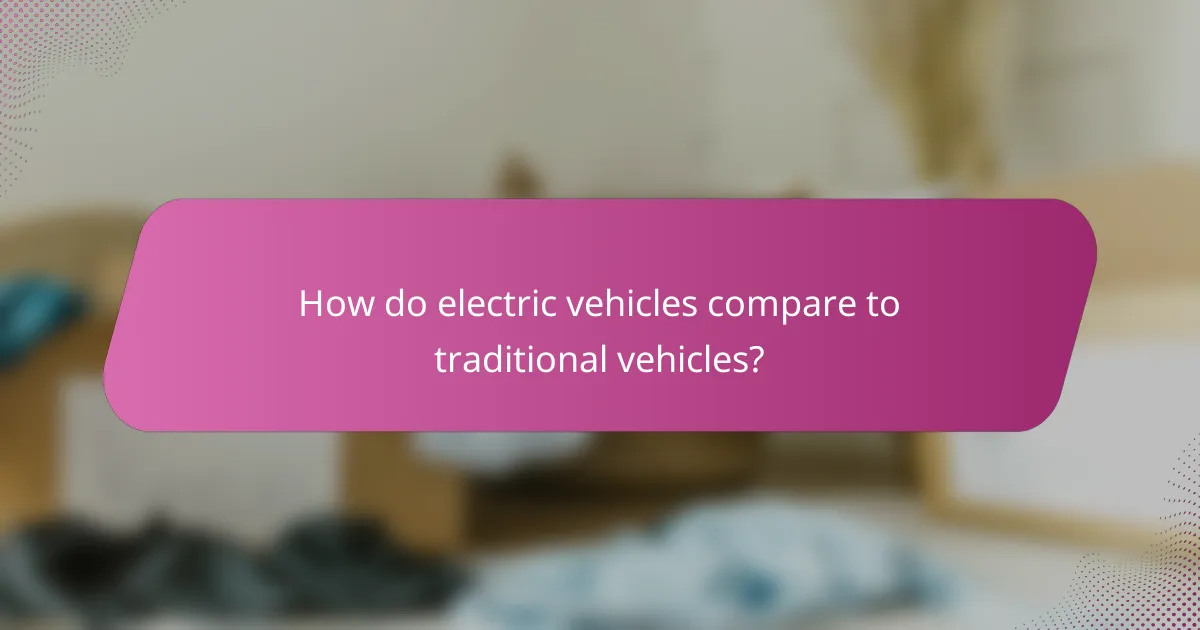
How do electric vehicles compare to traditional vehicles?
Electric vehicles (EVs) generally outperform traditional gasoline vehicles in several key areas, including fuel efficiency, maintenance costs, and lifecycle emissions. These advantages make EVs a compelling choice for environmentally conscious consumers and those looking to reduce long-term expenses.
Fuel efficiency metrics
Electric vehicles are typically more efficient than traditional vehicles, converting over 70% of electrical energy from the grid to power at the wheels, compared to about 20% for gasoline engines. This efficiency translates to lower energy costs per mile, making EVs a cost-effective option for daily commuting.
For instance, many EVs achieve the equivalent of over 100 miles per gallon (MPGe), while conventional vehicles often average between 20 to 30 miles per gallon. This significant difference can lead to substantial savings over time, especially for drivers covering long distances.
Maintenance cost differences
Maintenance costs for electric vehicles are generally lower than those for traditional vehicles due to fewer moving parts and no need for oil changes. EVs often require less frequent brake maintenance as regenerative braking systems help extend brake life.
On average, EV owners can expect to spend about 30% less on maintenance compared to their gasoline counterparts. However, battery replacement can be a significant expense, typically occurring after several years, so it’s essential to consider warranty options and battery life when purchasing an EV.
Lifecycle emissions analysis
Electric vehicles produce zero tailpipe emissions, which significantly reduces local air pollution compared to traditional vehicles. However, the overall lifecycle emissions of EVs depend on the energy sources used for electricity generation.
In regions where renewable energy sources dominate, such as wind or solar, the lifecycle emissions of EVs can be substantially lower than those of gasoline vehicles. Conversely, in areas reliant on coal or other fossil fuels, the emissions benefits may be less pronounced. It’s crucial for potential EV buyers to consider the local energy mix when evaluating the environmental impact of their vehicle choice.
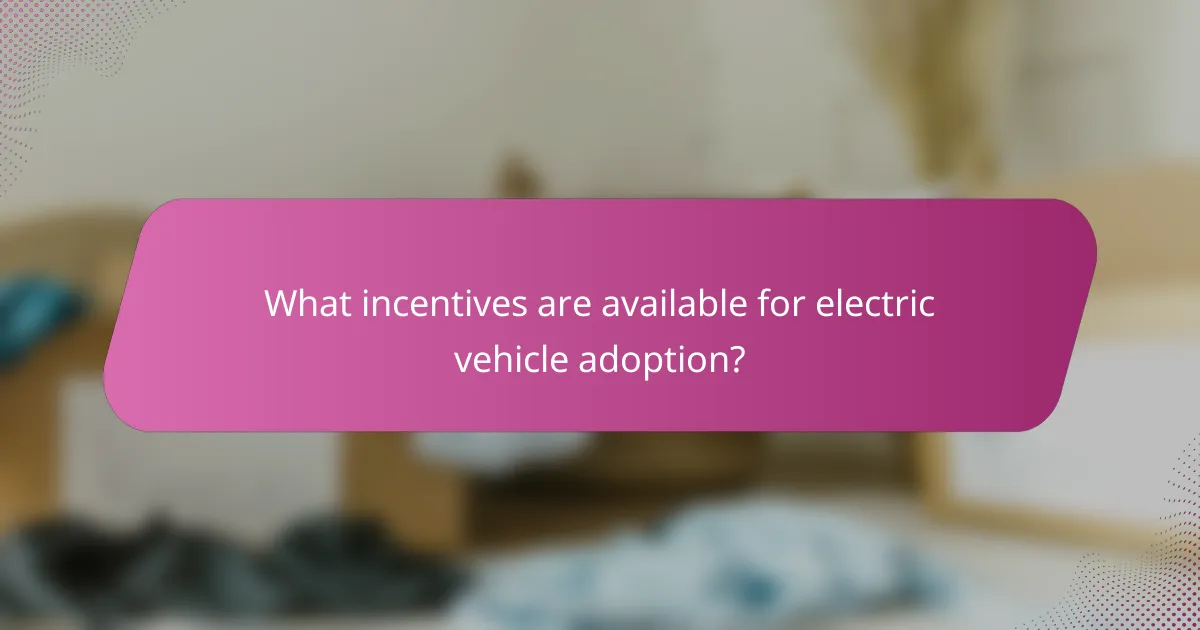
What incentives are available for electric vehicle adoption?
Various incentives are available to encourage electric vehicle (EV) adoption, including government tax credits, state rebates, and utility company programs. These incentives can significantly reduce the overall cost of purchasing and operating an electric vehicle, making them more accessible to consumers.
Government tax credits
Government tax credits are a primary incentive for electric vehicle adoption, often providing substantial savings on federal taxes. In the United States, for instance, buyers may qualify for credits ranging from a few thousand to over $7,500, depending on the vehicle’s battery capacity and the manufacturer’s sales volume.
To take advantage of these credits, consumers should ensure they meet eligibility requirements, such as income limits and vehicle specifications. It’s advisable to consult with a tax professional to understand how these credits can be applied effectively during tax filing.
State rebates and incentives
Many states offer additional rebates and incentives for electric vehicle buyers, which can further reduce the purchase price. These state-level programs vary widely, with some states providing rebates of several hundred to several thousand dollars, while others may offer tax exemptions or reduced registration fees.
To maximize benefits, consumers should research their specific state’s offerings, as some programs may have limited funding or specific application deadlines. Websites of state energy offices often provide up-to-date information on available incentives.
Utility company programs
Utility companies frequently implement programs to encourage electric vehicle adoption, which may include rebates for home charging stations or special electricity rates for EV owners. These programs can help offset the costs of charging an electric vehicle, making it more economical to operate.
Consumers should contact their local utility providers to inquire about available programs and any associated requirements. Some utilities may also offer incentives for installing solar panels to power EVs, further enhancing the environmental benefits of electric vehicle ownership.
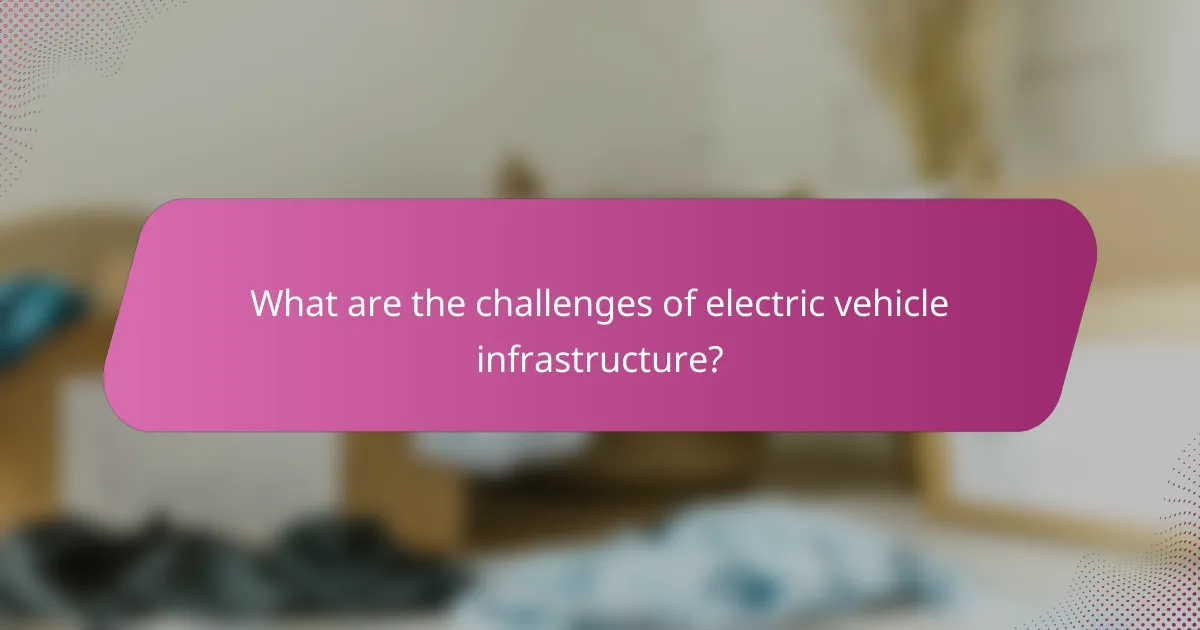
What are the challenges of electric vehicle infrastructure?
The challenges of electric vehicle infrastructure primarily include limited charging station availability, concerns about grid capacity, and range anxiety among users. Addressing these issues is crucial for the widespread adoption of electric vehicles (EVs) and their integration into daily life.
Charging station availability
Charging station availability is a significant barrier to the adoption of electric vehicles. Many regions still lack sufficient charging points, particularly in rural areas, which can deter potential EV buyers. Expanding the network of charging stations is essential to ensure convenient access for all users.
To improve charging station access, local governments and private companies are investing in infrastructure development. This includes installing fast chargers in urban centers and along major highways. Users should consider the density of charging stations in their area when deciding to switch to an electric vehicle.
Grid capacity concerns
Grid capacity concerns arise as more electric vehicles are integrated into the power system. A significant increase in EV charging can strain existing electrical grids, especially during peak demand times. Upgrading grid infrastructure is necessary to support the growing number of electric vehicles.
Utilities are exploring solutions like smart charging, which allows EVs to charge during off-peak hours, reducing stress on the grid. Consumers can help by charging their vehicles at night or during low-demand periods, which not only eases grid pressure but can also lower electricity costs.
Range anxiety issues
Range anxiety refers to the fear of running out of battery power before reaching a charging station. This concern is prevalent among potential electric vehicle owners and can hinder EV adoption. Understanding the range of specific models and planning routes can alleviate this anxiety.
Many modern electric vehicles offer ranges that meet daily driving needs, often exceeding 200 miles on a single charge. Users should familiarize themselves with their vehicle’s range and utilize apps that locate nearby charging stations to enhance confidence in their EV’s capabilities.
